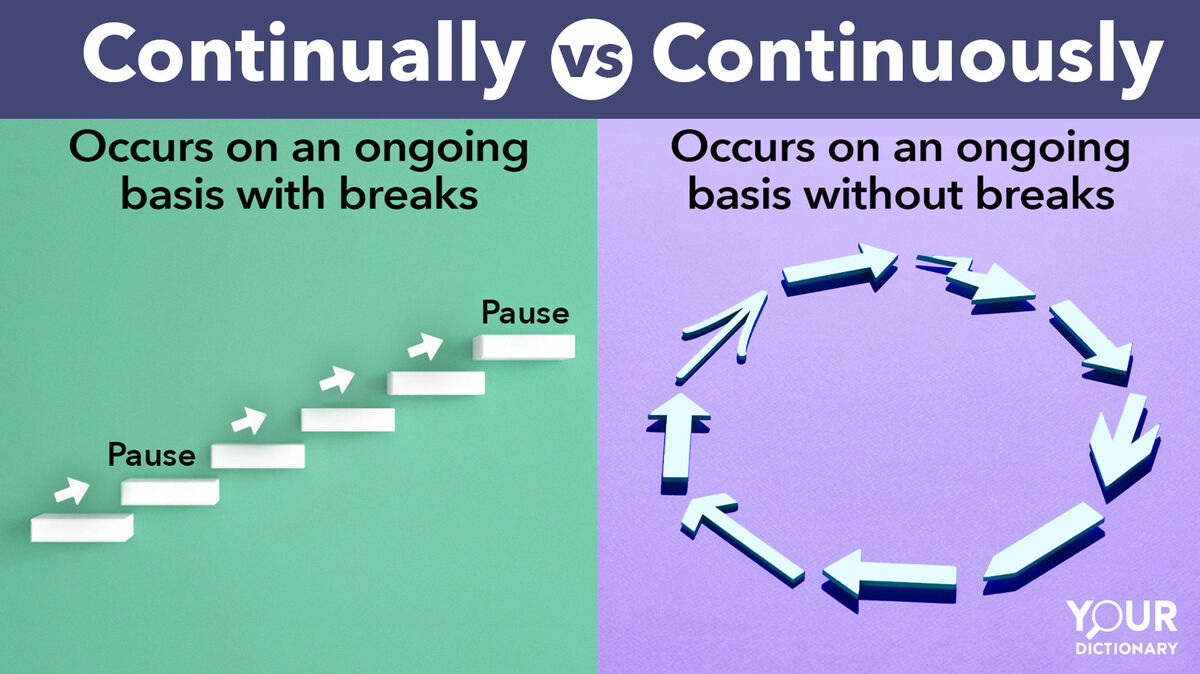
Is your brother continually annoying you or continuously annoying you? What's the difference between these words — and does it really matter? Learn when to use continually vs. continuously in your writing.
Differences Between Continually and Continuously
Both continually and continuously are adverbs of frequency. They come from the verb "to continue" and indicate that an action is ongoing. But despite these similarities, there is a key difference in their meaning:
- continually - the action is ongoing, but only happens from time to time
- continuously - the action is ongoing and doesn't stop
For example, it may feel like your brother is continuously annoying you. But he takes breaks to sleep, go to school, brush his teeth, and so on — so he's continually annoying you.
Memory Trick for Continually vs. Continuously
Consider the word constantly when deciding which of these words to use. It has an "s," just like continuously. Actions that occur continuously are constant — actions that occur continually are frequent, but not constant.
Using Continually and Continuously in Writing
Because continually and continuously are so similar, it's easy to get them mixed up. Review the following examples to see how these words should be used in a sentence.
- It rains continuously in Seattle. (Incorrect - it would never stop raining if this were true)
- It rains continually in Seattle. (Correct - it rains a lot, but not every second)
- The human heart beats continually throughout the day. (Incorrect - you would die if your heart took breaks from beating)
- The human heart beats continuously throughout the day. (Correct - it never stops beating)
- My teacher continuously corrects my grammar. (Incorrect - she would never have time to teach if this were true)
- My teacher continually corrects my grammar. (Correct - she corrects your grammar from time to time)
- The teens continuously ate snacks while they played video games. (Incorrect - if they never stopped snacking, they couldn't play video games)
- The teens continually ate snacks while they played video games. (Correct - they continued to snack during breaks in their games)
- Human beings have continually evolved throughout history. (Incorrect - there have been no breaks in human evolution)
- Human beings have continuously evolved throughout history. (Correct - humans have never stopped evolving)
Try to replace continuously in these sentences with constantly, and replace continually with frequently. You'll find that the meanings stay the same.
Using the Adjective Forms: Continual vs. Continuous
While the adverbs continually and continuously describe actions, their adjective forms continual and continuous describe nouns. They have the same meanings, but different uses. For example:
- Your continuous tapping on the door drives me crazy.
- We have continual arguments about money.
- The continuous ticking of the clock reminded me that I was running out of time.
- Our car has a continual problem with overheating.
Continual and Continuous Learning
Some say your learning should be continual — but when you learn the difference between commonly confused words such as these, your learning is continuous! If you're ready for more vocabulary challenges, see if you know how to use nauseous vs. nauseated correctly. You can also test your knowledge on the ongoing debate between infer vs. imply.